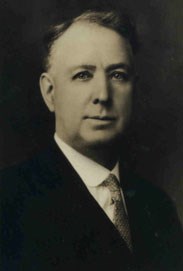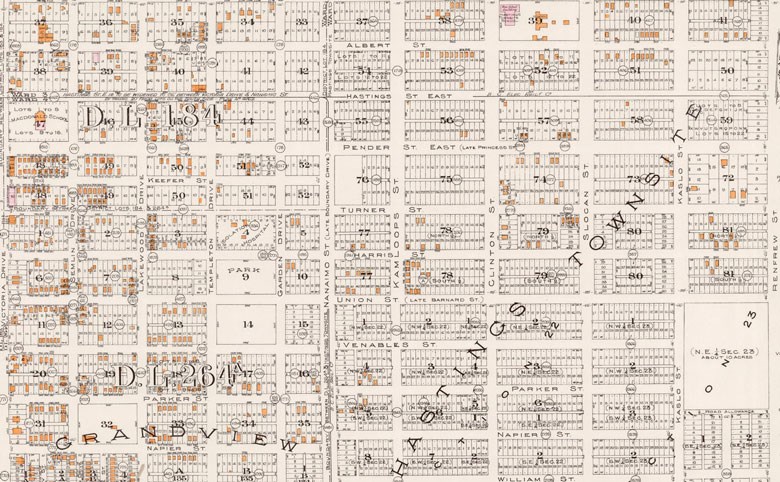 |
Vancouver Heritage Foundation is a registered charity supporting the conservation of heritage buildings and structures in recognition of their contribution to the city’s economy, sustainability and culture. |
Tucked into the north east corner of our city is a neighbourhood that was known as “Khanahmoot” by local First Nations, long before it was part of Vancouver. Col. Moody of the Royal Engineers was drawn to Khanahmoot for its resources and in 1863 he surveyed the area and supervised the creation of a government town reserve. An old trail that linked Burrard Inlet to the abundant berry grounds around Burnaby Lake was expanded connecting the Inlet to New Westminster.
 Plan of Hastings, 1873 CVA MAP 1037.01
Plan of Hastings, 1873 CVA MAP 1037.01
In 1865, Vancouver’s first hotel, the seaside resort named the Brighton Hotel, was built and became popular with loggers, mill workers and vacationers from New Westminster.
 New Brighton Hotel, 1886. Photograph shows George Black beside, and G.B. Corbould on, the horse. CVA AM54-S4-: Dist P13
New Brighton Hotel, 1886. Photograph shows George Black beside, and G.B. Corbould on, the horse. CVA AM54-S4-: Dist P13
In 1869, the government reserve was named after Rear Admiral Hastings of the British naval fleet to become Hastings Townsite. Industry developed quickly, including the Hastings Sawmill, one of early Vancouver’s major employers. Hastings Townsite was eagerly logged for its giant cedar, fir and hemlock supplying homes and structures all over Vancouver.
As the townsite grew, it would achieve many significant firsts such as Vancouver’s first road, wharf, hotel, post office, real estate transaction, and the first ferry between Burrard Inlet and Victoria.
In December 1910, a referendum was held on the proposed amalgamation of Hastings Townsite with the City of Vancouver. Frank Woodside, a man with a history in mining and labour activism was one of the principal advocates of the annexation.
 Frank Woodside. Photo courtesy Association for Mineral Exploration BC amebc.ca
Frank Woodside. Photo courtesy Association for Mineral Exploration BC amebc.ca
The vote was held at 2598 Eton, adjacent to the Woodside home at 2594 Eton which is now listed on the Vancouver Heritage Register. After a positive result from the referendum, Hastings officially amalgamated with the City of Vancouver on January 1st, 1911. Woodside was elected an alderman for the City of Vancouver, representing the ward of Hastings Townsite. He held the seat from 1911 to 1928, excepting the years 1920 and 1923.
 Goad’s atlas of the city of Vancouver, British Columbia and surrounding municipalities in four volumes. Volume Two, December 1912
Goad’s atlas of the city of Vancouver, British Columbia and surrounding municipalities in four volumes. Volume Two, December 1912
After the amalgamation, the area that was Hastings Townsite became largely developed for residential use. Large landowners such as John Hendry, the owner of the Hastings Sawmill, and Joe Martin, the former Premier of BC, sold off their holdings to thousands of working-class people. The building boom took off in the 1920s and by the end of the 1940s most of the available land was covered with single family homes.
In the decades following WWII, the neighbourhood continued to grow as members of diverse cultural communities moved in to what is now known as Hastings Sunrise.
Join us at the East Café at 2401 East Hastings (at Nanaimo), to learn more about Hastings Townsite, 1900s Vancouver and the early development of our city as we unveil our plaque commemorating the original eastern border of Vancouver.


